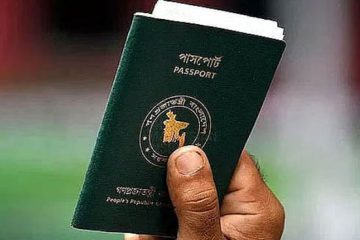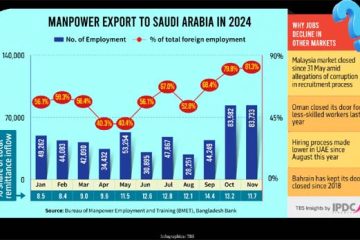A majority of farmers in Bangladesh use modern equipment, such as two-wheeler power tillers and four-wheeler tractors, for farming, according to a recent study.
The USAID-funded study revealed that the use of mechanical power for farmland preparation in Bangladesh was quite high as 72 per cent of farmers at the national rural level are using two-wheeler power tillers. The figure was 76 per cent in the Feed the Future (FTF) zone areas, it added. The Washington-based International Food Policy Research Institute (IFPRI) had conducted the survey over a period of five months that ended in March 2012. The IFPRI report was based on the survey of 6,500 households in the country’s rural areas.
According to the study, rural Bangladesh has higher usage of four-wheeler tractors (16 per cent) as compared to the FTF zone average of 12 per cent. However, almost one-third of the farmers still use draft animals for land preparation, mainly for land leveling after machine plowing.
IFPRI chief of party, Dr Akhter Ahmed, told The Independent that the divisional distribution of power tiller usage by farmers is quite skewed. Chittagong division reported only 28 per cent usage compared to more than 50 per cent usage in other divisions, with the highest incidence of 88 per cent usage in Rajshahi division.
The report said that though Chittagong division reported low usage of power tillers, it boasted of the highest division-wise tractor usage at 42 per cent, while the rate is less than 20 per cent in the remaining six divisions. The survey also found that almost 70 per cent of all categories of farmers had taken loans.
Bangladesh Bank governor Dr Atiur Rahman said the government has taken up a very vital step to support farmers in getting bank credit. “Any farmer can open an account with the very small amount of Tk. 10. It’s a bold step by the government that allows a rural farmer to get easy access to the credit system,” he said.
Sources said the Bangladesh Krishi Bank (BKB) and the Rajshahi Krishi Unnayan Bank (RAKUB) are playing a vital role in bank credit for farmers. The report, however, mentioned that the access to formal agricultural credit institutions in the entire country was relatively very low. Moreover, the outreach of these two credit institutions is more towards medium and large farmers than marginal and small peasants.
Access to credit appears to assist farmers with adopting new technologies. The rate of cultivation of hybrid boro rice is higher among farmers who take agricultural credit than among those who do not take such credit, IFPRI chief of party said, having quoted the survey.
“But still Bangladesh is suffering in nutrition side as rice is the main staple for all households, where as vegetables, potatoes, fish, oil are consumed by the rich mostly in rural areas,” Ahmed said.
Rice has overwhelming dominance in cropping patterns. The analysis indicates that, on average, rice accounts for about 77 per cent of the total cropped area of sample households at the national level. The share of rice on total cropped land varies from about 68 per cent in the FTF zone to as high as 94 per cent in Sylhet division.
-With The Independent input




















